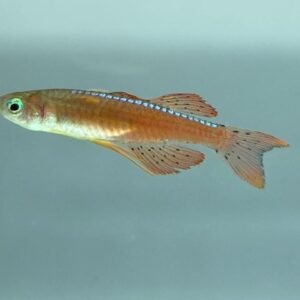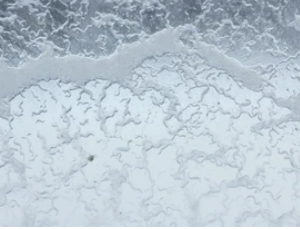Telmatochromis Temporalis
₹1,200.00 Original price was: ₹1,200.00.₹800.00Current price is: ₹800.00.
Guardians of the Rocky Realm: Telmatochromis Temporalis
Out of stock
Telmatochromis temporalis is a small species of cichlid fish native to Lake Tanganyika in East Africa. This species is known for its interesting behavior and is sometimes kept in aquariums by fish enthusiasts.
II. You would love the fish because…
Telmatochromis temporalis is a relatively small cichlid, with males typically reaching a length of about 2.5 to 3 inches (6 to 7.5 cm), while females are slightly smaller. They have an elongated body shape and are typically silver or gray in color, with some variations in patterns and shades.
These fish are found in the rocky shoreline areas of Lake Tanganyika, where they inhabit crevices and rocky caves. They are adapted to living in and around rocky structures, which provide them with shelter and protection.
Telmatochromis temporalis is known for its intriguing breeding behavior. They are substrate spawners, meaning they lay their eggs on a flat surface within their chosen crevice or cave. They are highly territorial and will fiercely defend their chosen breeding site. In fact, they are one of the few cichlid species known to practice “egg-spot” mimicry, where they have a false eyespot on their anal fin to distract potential predators away from their real eggs.
If you plan to keep Telmatochromis temporalis in an aquarium, it’s important to replicate their natural habitat. Provide plenty of rocks and caves for hiding and territorial behavior. Maintain water conditions with a pH of 7.8-9.0 and a temperature range of 75-82°F (24-28°C). Due to their territorial nature, it’s best to keep them in a species-specific tank or with other compatible Tanganyikan cichlids.
Telmatochromis temporalis is not considered a threatened species in its natural habitat. However, as with many species from Lake Tanganyika, conservation efforts to protect the lake’s ecosystem are crucial due to various environmental and anthropogenic pressures.
Telmatochromis temporalis is a fascinating cichlid species known for its unique breeding behavior and adaptation to rocky habitats. If you plan to keep them in an aquarium, it’s essential to provide them with the appropriate environment and conditions to mimic their natural habitat and promote their well-being.
IV. Species compatibility
- Altolamprologus
- Julidochromis
- Neolamprologus
- Other dwarf African cichlids from Malawi
V. How to feed this species?
In their natural habitat, they primarily feed on small invertebrates, zooplankton, and algae. In captivity, they can be offered a diet of high-quality cichlid pellets, live or frozen foods, and some vegetable matter..
Disclaimer for Live Aquarium Species
Disclaimer for Individual fish prices
| Weight | 1 kg |
|---|---|
| Dimensions | 15 × 20 × 30 cm |
| Family | Cichlidae |
| Scientific Name | Telmatochromis temporalis |
| Tank size | 40 L |
| Special Diet | dried foods and live/frozen foods. |
| Native To | Lake Tanganyika |
| Care Level | Intermediate |
| Max water Temp | 79 °C |
| Min Water Temp | 77 °C |
| pH Max | 9.0 |
| pH Min | 8.5 |
| Max size | 10.2 cm |
Related products
Live Aquarium Fish
Live Aquarium Fish
Live Aquarium Fish
Live Aquarium Fish
Live Aquarium Fish
Exotics & Oddballs
Live Aquarium Fish
Live Aquarium Fish































